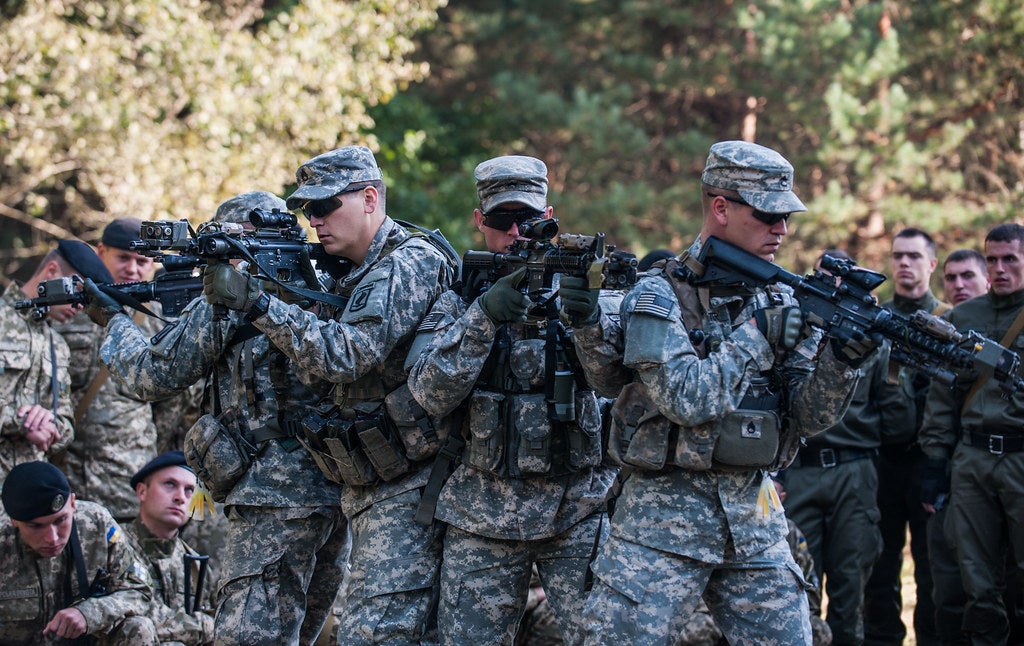
The US Department of Defense (DoD) has confirmed a new presidential drawdown authorisation worth over $275m to provide more military capabilities to Ukraine.
The approval for the 24th drawdown of equipment from DoD stocks includes more ammunition for High Mobility Artillery Rocket Systems, 500 precision-guided 155mm artillery rounds, and 2,000 155mm rounds of Remote Anti-Armor Mine systems.

Discover B2B Marketing That Performs
Combine business intelligence and editorial excellence to reach engaged professionals across 36 leading media platforms.
Small arms with nearly 2.75 million rounds, 125 High Mobility Multipurpose Wheeled Vehicles, and over 1,300 anti-armour systems, including AT4 anti-tank weapons and shoulder-launched assault weapons, are also part of the aid package.
To enhance Ukraine’s communications capabilities, the US will deliver four satellite communication antennas.
US Defense Secretary Lloyd J Austin III said the government will supply two National Advanced Surface-to-Air Missile Systems to Ukraine next month.
He noted that the US is also coordinating with its allies, who have committed to deliver air defence systems to Ukraine.

US Tariffs are shifting - will you react or anticipate?
Don’t let policy changes catch you off guard. Stay proactive with real-time data and expert analysis.
By GlobalDataWhile Spain will ship HAWK air defence launchers, Germany has pledged to send IRIS-T air defence systems to the war-hit nation.
Pentagon deputy press secretary Sabrina Singh said the US Army Pacific will activate its first combat training centre for the Indo-Pacific region in Hawaii.
Thousands of personnel from all US military services will be part of the first rotation at the Joint Pacific Multinational Readiness Center (JPMRC).
Troops from Thailand, Indonesia, and the Philippines will also take part.
Singh said: “JPMRC increases combined training opportunities for regional allies and partners and produces significant cost savings, versus moving personnel and equipment to continental US training facilities.”



